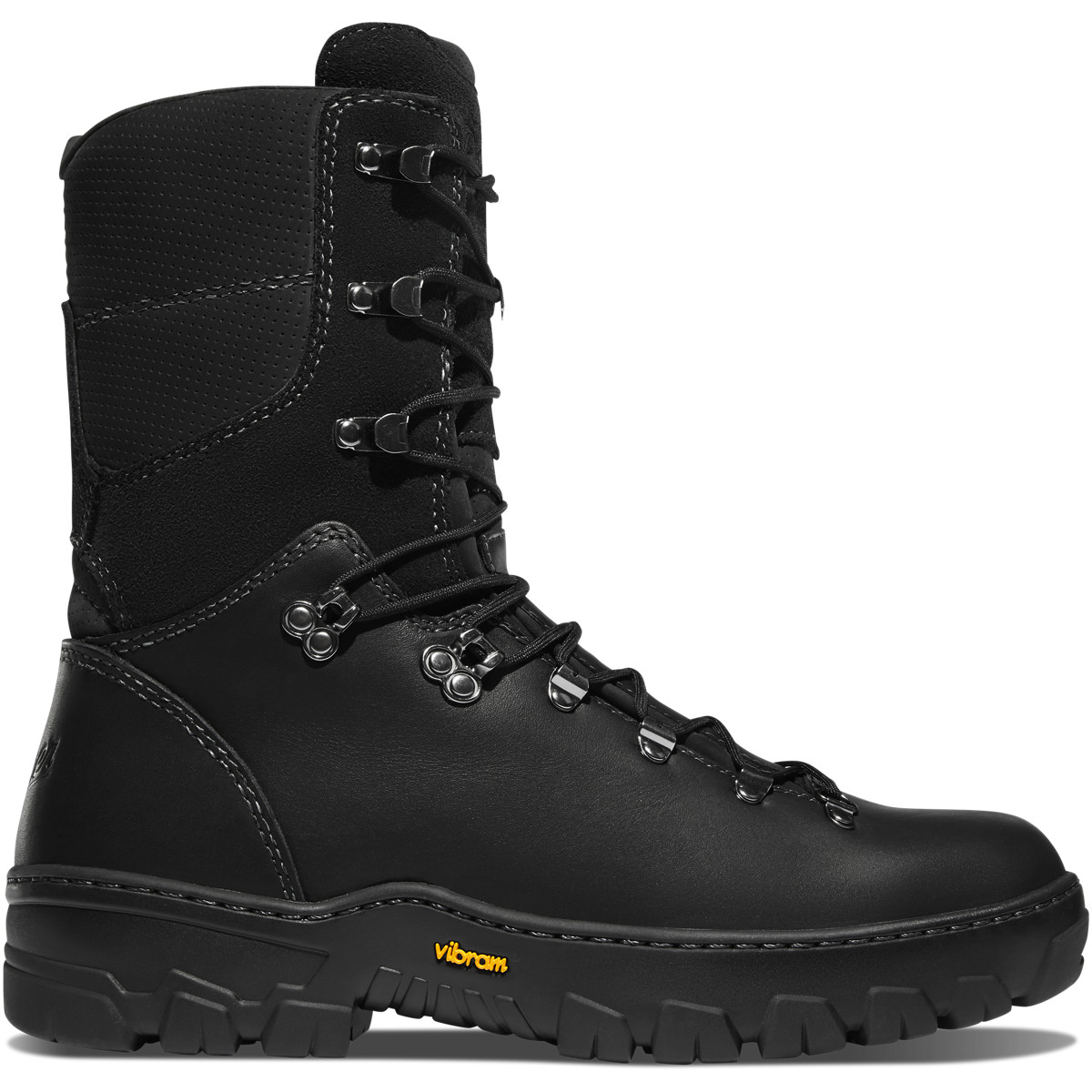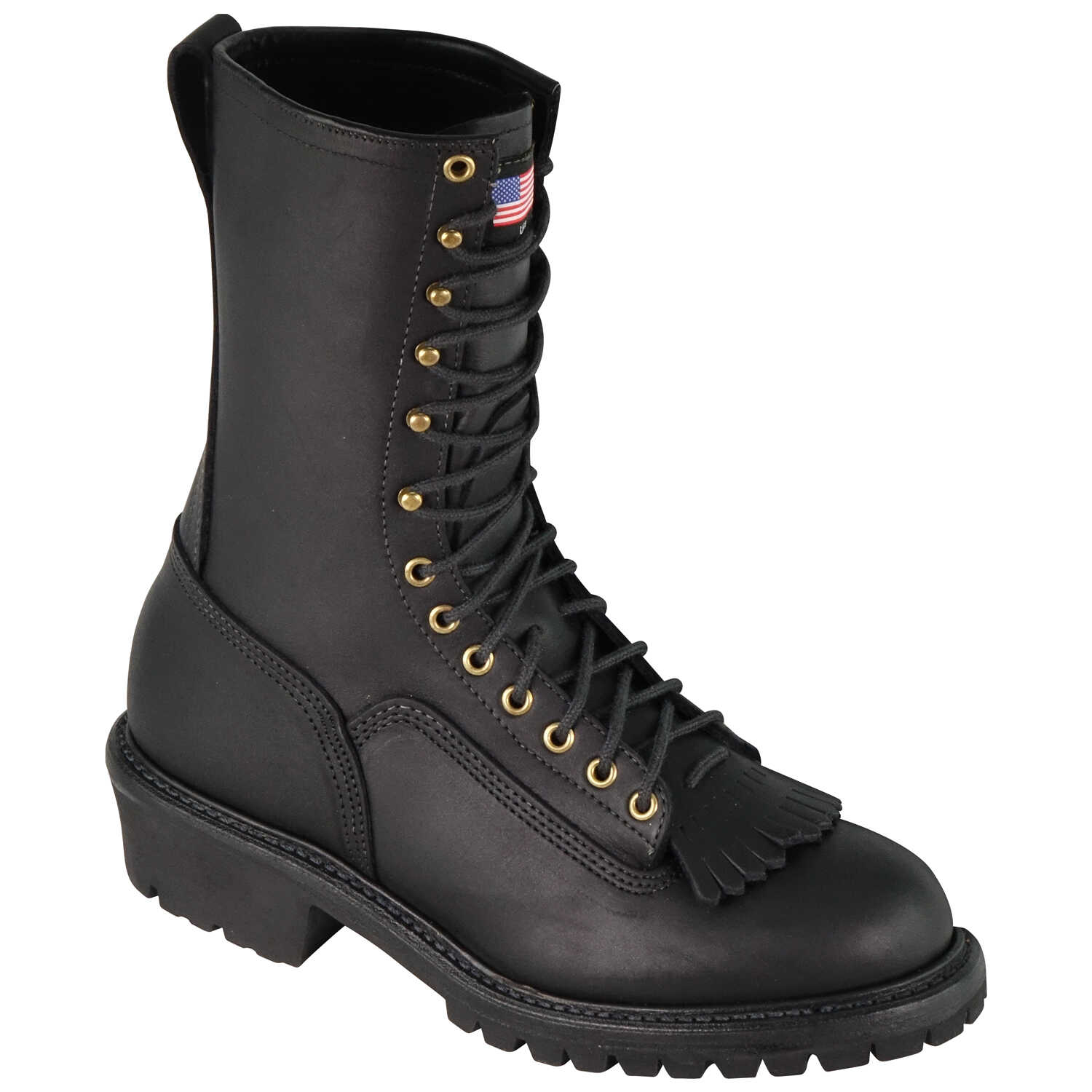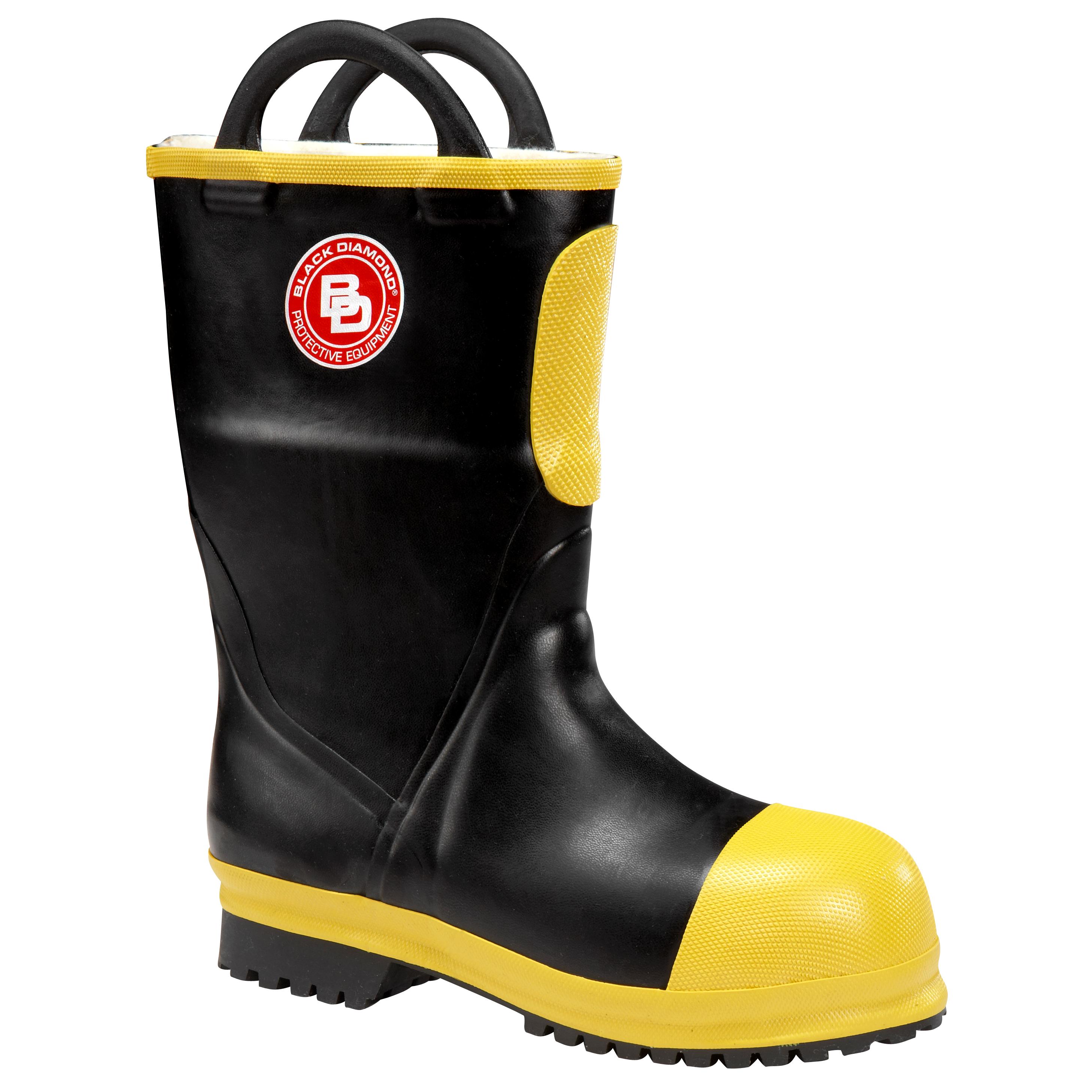Why NFPA Certification Matters in Wildland Firefighting
In the world of wildland firefighting, every piece of gear plays a critical role in ensuring the safety and effectiveness of firefighters. When it comes to wildland fire boots, NFPA certification is a crucial factor to consider. The National Fire Protection Association (NFPA) sets the standard for wildland fire boots, ensuring that they meet rigorous testing and performance requirements.
Wildland firefighters who wear non-compliant boots risk exposing themselves to a range of hazards, including heat stress, foot fatigue, and ankle sprains. In a profession where every second counts, the last thing you need is to be worrying about your footwear. NFPA-approved wildland fire boots, on the other hand, provide a level of assurance that your boots will perform under the most demanding conditions.
By choosing NFPA-approved wildland fire boots, you’re not just protecting your feet – you’re protecting your life. These boots are designed to withstand the extreme temperatures, rugged terrain, and harsh conditions that wildland firefighters face on a daily basis. With NFPA certification, you can trust that your boots will provide the necessary protection and support to get the job done.
In addition to the safety benefits, NFPA-approved wildland fire boots also offer a range of performance advantages. They are designed to be lightweight, breathable, and flexible, allowing for maximum mobility and comfort on the fireline. Whether you’re fighting a wildfire in the mountains or responding to a structural fire in a urban area, NFPA-approved wildland fire boots are the perfect choice.
What to Look for in NFPA Approved Wildland Fire Boots
When it comes to choosing the right NFPA-approved wildland fire boots, there are several key features and requirements to consider. These boots are designed to provide protection, support, and comfort in the most demanding wildland firefighting environments. Here are some of the essential features to look for in NFPA-approved wildland fire boots:
Heat Resistance: Wildland fire boots must be able to withstand extreme temperatures, including heat from flames, sparks, and hot surfaces. Look for boots with heat-resistant materials, such as leather or synthetic materials, that can protect your feet from burns and heat stress.
Ankle Support: Wildland firefighting often involves navigating rugged terrain, including steep slopes, rocky surfaces, and uneven ground. NFPA-approved wildland fire boots must provide adequate ankle support to prevent sprains and twists.
Slip Resistance: Slippery surfaces are a common hazard in wildland firefighting, and NFPA-approved wildland fire boots must be designed to provide traction and grip on a variety of surfaces. Look for boots with slip-resistant soles and deep lugs to help prevent slips and falls.
Moisture Protection: Wildland firefighting often involves working in wet and humid conditions, and NFPA-approved wildland fire boots must be able to keep your feet dry and comfortable. Look for boots with waterproof or water-resistant materials, such as Gore-Tex or similar technology.
Breathability: Wildland firefighting can be physically demanding, and NFPA-approved wildland fire boots must be designed to provide breathability and ventilation to keep your feet cool and dry. Look for boots with breathable materials, such as mesh panels or perforations, to help regulate foot temperature.
By considering these key features and requirements, you can choose the right NFPA-approved wildland fire boots for your needs and ensure that your feet are protected and comfortable on the fireline.
How to Choose the Right Wildland Fire Boots for Your Needs
Selecting the right NFPA-approved wildland fire boots can be a daunting task, especially with the numerous options available in the market. However, by considering a few key factors, you can choose the best boots for your specific needs and ensure that your feet are protected and comfortable on the fireline.
Structural Firefighting: For structural firefighting, look for NFPA-approved wildland fire boots that provide additional ankle support and protection from heat and flames. Boots with a higher ankle collar and more substantial materials can provide the necessary protection for this type of firefighting.
Hotshot Crews: Hotshot crews require boots that are lightweight, breathable, and provide excellent traction and agility. Look for NFPA-approved wildland fire boots with a more minimalist design, mesh panels for ventilation, and aggressive tread patterns for traction.
Wildland Firefighting: For wildland firefighting, look for NFPA-approved wildland fire boots that provide a balance of protection, support, and mobility. Boots with a mid-cut or high-cut design can provide the necessary ankle support, while breathable materials and mesh panels can help keep your feet cool and dry.
Foot Shape and Size: It’s essential to choose NFPA-approved wildland fire boots that fit comfortably and accommodate your foot shape and size. Look for boots with a roomy toe box, a comfortable heel, and a secure lacing system.
Brand and Quality: Finally, consider the brand and quality of the NFPA-approved wildland fire boots. Look for reputable brands that specialize in wildland firefighting boots, and choose boots that meet the highest standards of quality and performance.
By considering these factors, you can choose the right NFPA-approved wildland fire boots for your needs and ensure that your feet are protected and comfortable on the fireline. Remember, the right boots can make all the difference in your performance and safety as a wildland firefighter.
Danner vs. Thorogood: Comparing Top Brands of NFPA Approved Wildland Fire Boots
When it comes to choosing the right NFPA-approved wildland fire boots, two popular brands stand out from the rest: Danner and Thorogood. Both brands have a long history of producing high-quality, NFPA-approved wildland fire boots that meet the highest standards of performance and safety. But how do they compare?
Danner NFPA Approved Wildland Fire Boots: Danner is a well-known brand in the wildland firefighting community, and for good reason. Their NFPA-approved wildland fire boots are renowned for their exceptional quality, durability, and comfort. Danner boots feature a rugged, hand-crafted design that can withstand the toughest wildland firefighting conditions. They also offer a wide range of styles and sizes to fit different foot shapes and preferences.
Thorogood NFPA Approved Wildland Fire Boots: Thorogood is another trusted brand in the wildland firefighting industry, and their NFPA-approved wildland fire boots are highly regarded for their performance and value. Thorogood boots feature a more affordable price point than Danner, without sacrificing quality or safety. They also offer a wide range of styles and sizes, including boots specifically designed for hotshot crews and structural firefighting.
Key Differences: So, what sets Danner and Thorogood apart? One key difference is the price point. Danner boots tend to be more expensive than Thorogood, although both brands offer high-quality, NFPA-approved wildland fire boots. Another difference is the design and features. Danner boots tend to have a more rugged, hand-crafted design, while Thorogood boots have a more modern, streamlined look.
Ultimately, the choice between Danner and Thorogood NFPA-approved wildland fire boots comes down to personal preference and budget. Both brands offer exceptional quality, performance, and safety, and both are trusted by wildland firefighters around the world. By considering your specific needs and preferences, you can choose the right NFPA-approved wildland fire boots for your needs and ensure that your feet are protected and comfortable on the fireline.
Breaking In Your New Wildland Fire Boots: Tips and Tricks
Breaking in a new pair of NFPA-approved wildland fire boots can be a daunting task, but with the right techniques and patience, you can ensure a comfortable and safe fit on the fireline. Here are some tips and tricks to help you break in your new wildland fire boots:
Conditioning: Before you start wearing your new NFPA-approved wildland fire boots, apply a conditioner to the leather to soften it and make it more pliable. This will help reduce the break-in time and make the boots more comfortable from the start.
Stretching: Use a shoe stretcher or a boot tree to stretch the boots and help them conform to your foot shape. This is especially important for the toe box and ankle area, where a snug fit is crucial.
Wearing Them In: Start by wearing your new NFPA-approved wildland fire boots for short periods, such as around the station or during light training exercises. Gradually increase the wear time as the boots become more comfortable.
Moisturizing: Apply a moisturizer to the leather to keep it soft and supple. This will help prevent cracking and drying, which can lead to a shorter lifespan for your boots.
Heat and Cold: Expose your new NFPA-approved wildland fire boots to different temperatures to help them mold to your feet. Wear them in hot and cold conditions to help the leather adapt to your foot shape.
Practice and Patience: Breaking in a new pair of NFPA-approved wildland fire boots takes time and practice. Be patient and don’t rush the process, as a comfortable and safe fit is crucial for wildland firefighting.
By following these tips and tricks, you can ensure a comfortable and safe fit with your new NFPA-approved wildland fire boots. Remember, a well-broken-in pair of boots is essential for wildland firefighting, as it can help prevent injuries and fatalities on the fireline.
Wildland Fire Boot Maintenance 101: Extending the Life of Your Boots
Regular maintenance is crucial to extend the life of your NFPA-approved wildland fire boots and ensure they continue to perform at their best on the fireline. Neglecting maintenance can lead to premature wear, reduced performance, and even safety risks. Here are some essential tips to help you maintain your NFPA-approved wildland fire boots:
Cleaning: Regularly clean your NFPA-approved wildland fire boots to remove dirt, debris, and chemicals that can damage the leather or compromise the boot’s performance. Use a soft-bristled brush and mild soap to clean the boots, and avoid using harsh chemicals or abrasive materials.
Conditioning: Condition your NFPA-approved wildland fire boots regularly to keep the leather soft and supple. Use a high-quality leather conditioner specifically designed for wildland fire boots, and apply it according to the manufacturer’s instructions.
Storing: Store your NFPA-approved wildland fire boots in a cool, dry place away from direct sunlight. Avoid storing them in airtight containers or bags, as this can cause moisture buildup and damage the leather.
Inspection: Regularly inspect your NFPA-approved wildland fire boots for signs of wear, damage, or deterioration. Check the soles, heels, and uppers for cracks, cuts, or abrasions, and replace the boots if you notice any damage.
Repair: If you notice any damage or wear on your NFPA-approved wildland fire boots, repair them promptly. Use a qualified cobbler or repair service that specializes in wildland fire boots, and follow the manufacturer’s guidelines for repair and maintenance.
By following these simple maintenance tips, you can extend the life of your NFPA-approved wildland fire boots, ensure they continue to perform at their best, and prioritize foot safety on the fireline.
Staying Safe on the Fireline: The Role of Wildland Fire Boots in Firefighter Safety
Wildland firefighting is a high-risk profession that requires specialized gear to protect firefighters from the dangers of the job. NFPA-approved wildland fire boots play a critical role in preventing injuries and fatalities on the fireline, and their importance cannot be overstated. Foot and ankle injuries are common hazards in wildland firefighting, and the right boots can mean the difference between safety and disaster.
Foot and ankle injuries can occur due to a variety of factors, including slips, trips, and falls, as well as exposure to extreme temperatures, sharp objects, and heavy loads. NFPA-approved wildland fire boots are designed to mitigate these risks by providing heat resistance, ankle support, and slip resistance. These features are essential for protecting firefighters’ feet and ankles from the hazards of the job.
In addition to preventing injuries, NFPA-approved wildland fire boots also play a critical role in preventing fatalities. According to the National Institute for Occupational Safety and Health (NIOSH), foot and ankle injuries are a leading cause of fatalities among wildland firefighters. By wearing NFPA-approved wildland fire boots, firefighters can significantly reduce their risk of fatal injury.
Furthermore, NFPA-approved wildland fire boots are designed to meet the unique demands of wildland firefighting. They are built to withstand the rigors of rugged terrain, extreme temperatures, and heavy loads, making them an essential component of a wildland firefighter’s personal protective equipment (PPE).
In conclusion, NFPA-approved wildland fire boots are a critical component of firefighter safety on the fireline. By providing heat resistance, ankle support, and slip resistance, they help prevent injuries and fatalities, and are an essential investment for any wildland firefighting organization.
Conclusion: Protecting Your Feet and Your Life with NFPA Approved Wildland Fire Boots
In the world of wildland firefighting, NFPA approved wildland fire boots are not just a necessity, but a lifeline. By choosing boots that meet the rigorous standards of the National Fire Protection Association, firefighters can significantly reduce their risk of injury and fatality on the fireline. From heat resistance to ankle support, NFPA approved wildland fire boots are designed to provide comprehensive protection in the most demanding environments.
By prioritizing foot safety, wildland firefighters can focus on what matters most – saving lives and protecting communities. NFPA approved wildland fire boots are an investment in the safety and well-being of firefighters, and a critical component of any wildland firefighting operation.
In this expert guide, we’ve explored the importance of NFPA certification, the key features of NFPA approved wildland fire boots, and the benefits of choosing the right boots for your needs. We’ve also delved into the world of top brands, maintenance tips, and breaking-in strategies to help you get the most out of your NFPA approved wildland fire boots.
Remember, when it comes to wildland firefighting, every second counts. Don’t compromise on foot safety – choose NFPA approved wildland fire boots and protect your feet, your life, and your livelihood.









